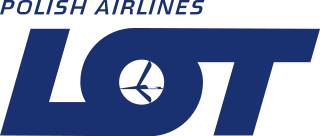
LOT Polish Airlines, legally incorporated as Polskie Linie Lotnicze LOT S.A., is the flag carrier of Poland. Established in 1928, LOT was a founding member of IATA and remains one of the world's oldest airlines in operation. With a fleet of 75 aircraft as of 2021, LOT Polish Airlines is the 18th largest operator in Europe with over 120 destinations across Europe, Asia and North America.
PZL was the main Polish aerospace manufacturer of the interwar period, and a brand of their aircraft. Based in Warsaw between 1928 and 1939, PZL introduced a variety of well-regarded aircraft, most notably the PZL P.11 fighter, the PZL.23 Karaś light bomber, and the PZL.37 Łoś medium bomber.

The invasion of Poland, also known as the September campaign, 1939 defensive war and Poland campaign, was an attack on the Republic of Poland by Nazi Germany and the Soviet Union which marked the beginning of World War II. The German invasion began on 1 September 1939, one week after the signing of the Molotov–Ribbentrop Pact between Germany and the Soviet Union, and one day after the Supreme Soviet of the Soviet Union had approved the pact. The Soviets invaded Poland on 17 September. The campaign ended on 6 October with Germany and the Soviet Union dividing and annexing the whole of Poland under the terms of the German–Soviet Frontier Treaty.
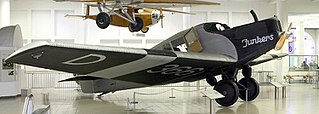
The Junkers F 13 was the world's first all-metal transport aircraft, developed in Germany at the end of World War I. It was an advanced cantilever-wing monoplane, with enclosed accommodation for four passengers. 322 planes of the type were manufactured, an exceptionally large number for a commercial airliner of the era, and were operated all over the globe. It was in production for thirteen years and in commercial service for more than thirty.

Warsaw Chopin Airport is an international airport in the Włochy district of Warsaw, Poland. It is Poland's busiest airport with 18.9 million passengers in 2019, thus handling approximately 40% of the country's total air passenger traffic. The airport is a central hub for LOT Polish Airlines as well as a base for Enter Air and Wizz Air.
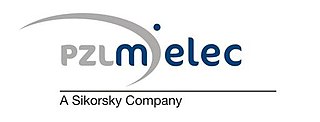
PZL Mielec, formerly WSK-Mielec and WSK "PZL-Mielec" is a Polish aerospace manufacturer based in Mielec. It is the largest aerospace manufacturer in postwar Poland. In 2007, it was acquired by Sikorsky Aircraft Corporation, which retained the brand name. Between 1948 and 2014, the company manufactured approximately 15,600 aircraft.
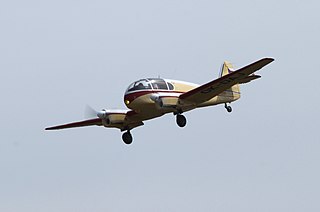
The Aero 45 was a twin-piston engined civil utility aircraft produced in Czechoslovakia after World War II. Aero Vodochody produced the aircraft in 1947–1951, after which the Let Kunovice rolled out these planes until 1961. In 1958 the Ae-45S became the first Czechoslovak plane to cross the Atlantic Ocean. It was the first product of the nation's postwar aviation industry and proved a great success, with many of the 590 produced being exported.

The Siebel Si 204 was a small twin-engined transport and trainer aircraft developed in World War II. It was based on the Fh 104 Hallore. Originally designed in response to an Ministry of Aviation development order for a small civil transport aircraft in 1938, it was eventually produced for the Luftwaffe.

Gdańsk Lech Wałęsa Airport is an international airport located 12 km (7.5 mi) northwest of Gdańsk, Poland, not far from the city centres of the Tricity metropolitan area: Gdańsk, Sopot and Gdynia. Since 2004 the airport has been named after Lech Wałęsa, the former Polish president. With around 5.4 million passengers served in 2019, just before the COVID-19 pandemic, it is the 3rd largest airport in Poland in terms of passenger traffic.

The Lisunov Li-2, originally designated PS-84, was a license-built Soviet-version of the Douglas DC-3. It was produced by Factory #84 in Moscow-Khimki and, after evacuation in 1941, at TAPO in Tashkent. The project was directed by aeronautical engineer Boris Pavlovich Lisunov.

Deutsche Luft Hansa A.G. was a German airline, serving as flag carrier of the country during the later years of the Weimar Republic and throughout Nazi Germany, when it had close links to the Nazi Party.

The RWD 13 was a Polish touring plane of 1935, three-seater high-wing monoplane, designed by the RWD team. It was the biggest commercial success of the RWD.

The PWS-24 was a Polish single-engine passenger aircraft for 4 passengers, built in PWS factory, used from 1933 to 1936 by LOT Polish Airlines. In spite of its limited capacity, it was the only series-built airliner of domestic design ever used by the LOT.
Lotnicze Warsztaty Doświadczalne (LWD) was the Polish aerospace manufacturer and construction bureau, located in Łódź, active between 1945 and 1950. The name meant Aircraft Experimental Workshops. It was the first Polish post-war aerospace construction bureau.

The MD-12 is a Polish four-engined short-range passenger and civil utility aircraft of the 1960s, which remained in a prototype stage. The PZL brand is conventional, since it did not enter production, and was referred to under its project designation only.

The SNCAC Martinet was a German-designed but French-built twin-engined military trainer and light transport monoplane. It was operated by the French military and in small numbers by French airlines from the late 1940s.
Small Planet Airlines was a Lithuanian leisure airline based at Vilnius Airport with further bases throughout Europe. It was the subsidiary of the Small Planet Group which also owned sister companies in Cambodia, Germany, Italy, and Poland, all of which are also now defunct.

Poznań Airline Society Aerotarg was the first Polish airline. It was founded in Poznań on 10 May 1921 mainly in order to serve participants and visitors of the first Poznań International Fair. Aerotarg operated the first regular air connection in Poland - the Poznań-Warsaw route, as well as the international connection between Poznań and the Free City of Danzig (Gdańsk).
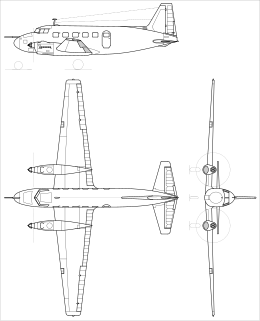
The CSS-12 was a prototype Polish twin-engined feederliner of the 1950s. A single example was built and flown in 1950, but no production followed.
Latvijas Gaisa Satiksmes Akciju Sabiedriba was a Latvian-German airline, based in Riga, Latvia. It operated international air lines from Riga Spilve airport. The airline was launched in 1922. It was finally dissolved in 1928 after major shareholders pulled out support.

















